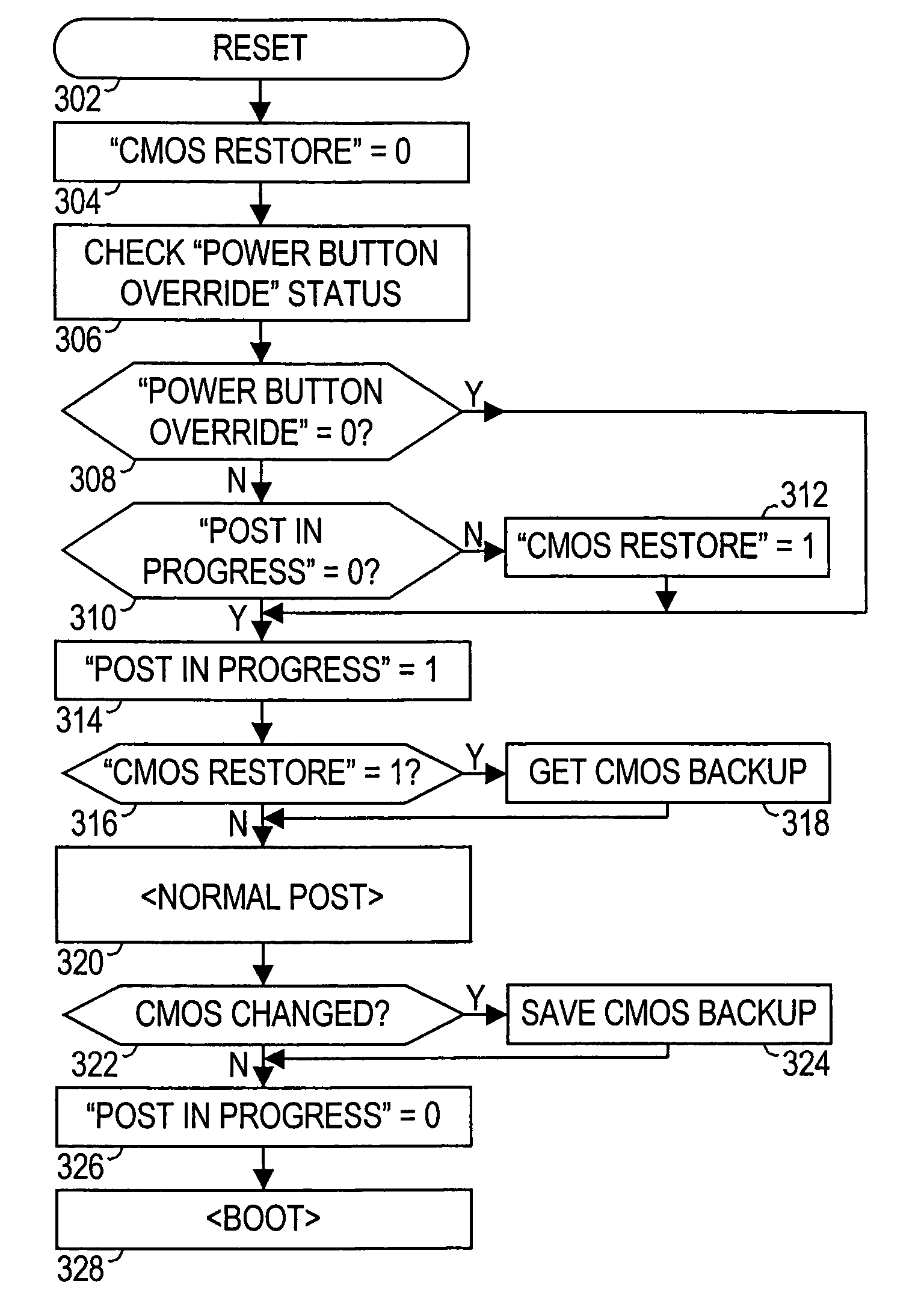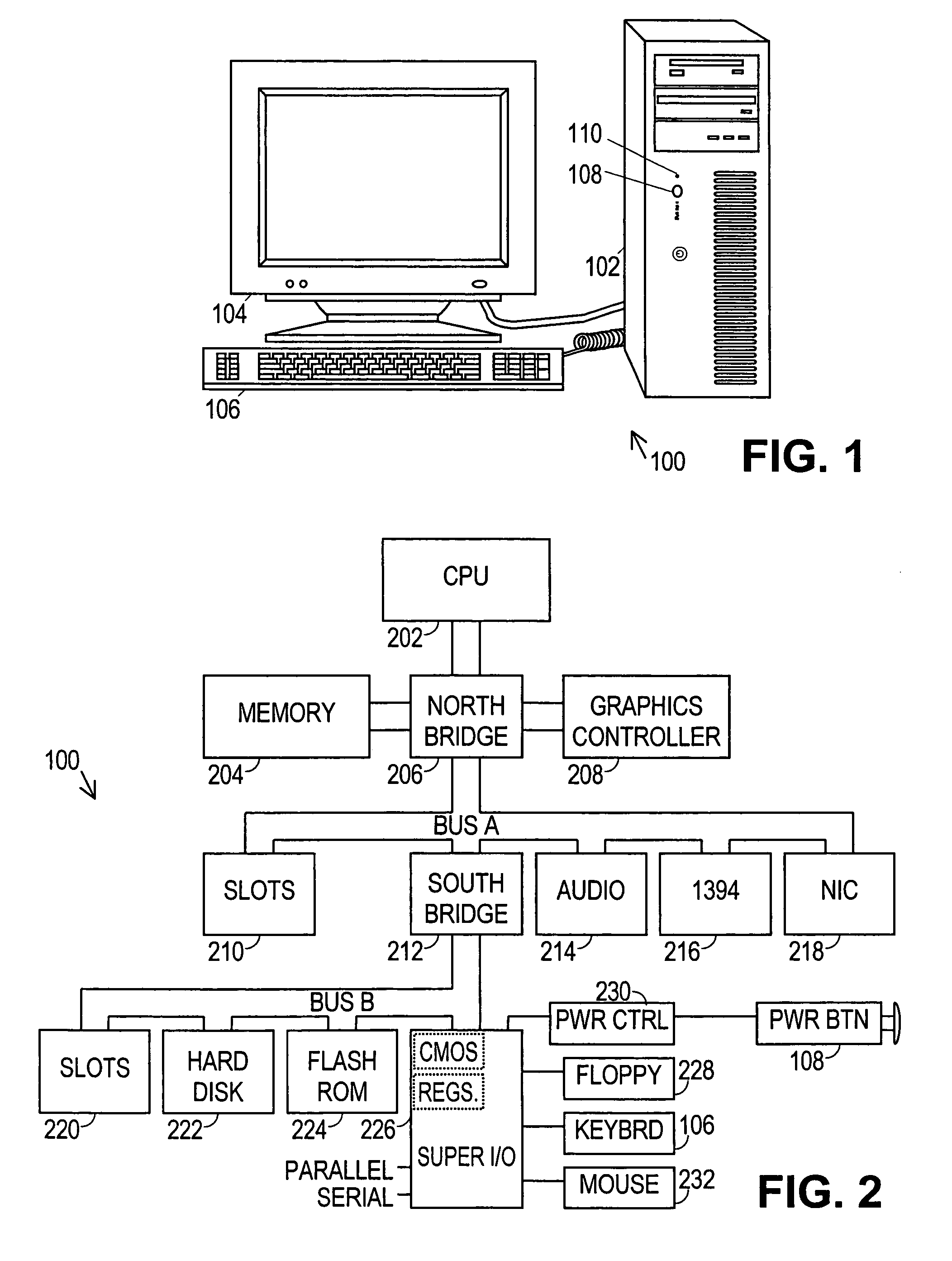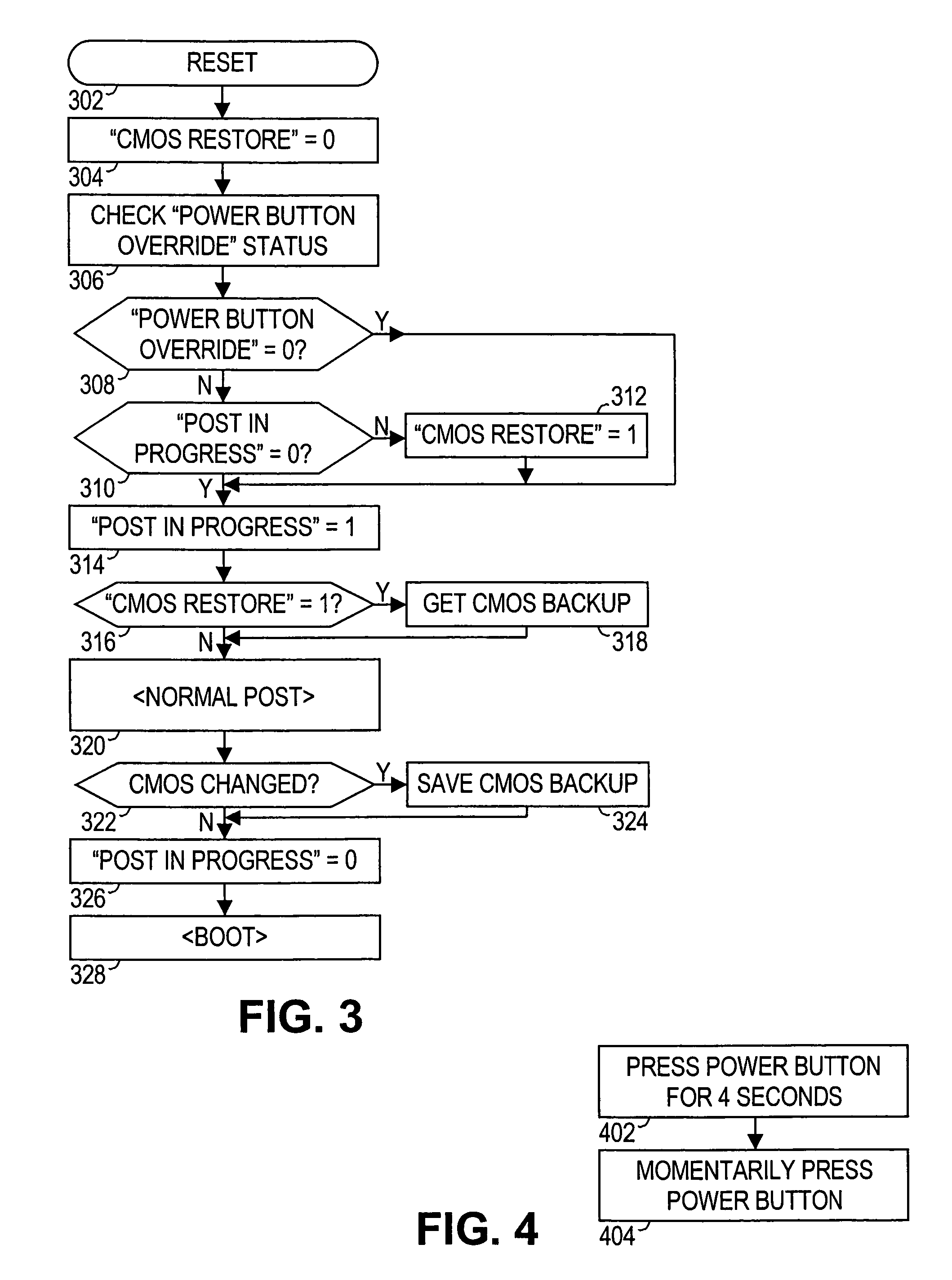Method for restoring CMOS in a jumperless system
a jumperless system and cmos technology, applied in the field of restoring cmos in a jumperless system, can solve the problems of increasing the probability of an incorrect parameter being present, increasing the complexity of computers, and increasing the number of configuration parameters
- Summary
- Abstract
- Description
- Claims
- Application Information
AI Technical Summary
Benefits of technology
Problems solved by technology
Method used
Image
Examples
Embodiment Construction
[0020]Turning now to the figures, FIG. 1 shows a computer system 100 in accordance with the preferred embodiment comprising a computer chassis 102 coupled to a display device 104 and a user input device 106. The computer chassis 102 preferably has a power button 108 and may also have a power indicator 110 such as a light emitting diode (“LED”). When the power button 108 is momentarily pressed, power indicator 110 illuminates and computer system 100 boots up. Momentarily pressing power button 108 a second time preferably places the computer system 100 in a reduced-power state.
[0021]At this point, a brief discussion of reduced-power states is warranted. Many computer system manufacturers have implemented a variety of reduced-power states for purposes such as conserving battery power, allowing fast boot-up, providing remote access, and extending component life. A standard known as the Advanced Configuration and Power Management Interface Specification (“ACPI”) has been promulgated by I...
PUM
 Login to View More
Login to View More Abstract
Description
Claims
Application Information
 Login to View More
Login to View More - R&D
- Intellectual Property
- Life Sciences
- Materials
- Tech Scout
- Unparalleled Data Quality
- Higher Quality Content
- 60% Fewer Hallucinations
Browse by: Latest US Patents, China's latest patents, Technical Efficacy Thesaurus, Application Domain, Technology Topic, Popular Technical Reports.
© 2025 PatSnap. All rights reserved.Legal|Privacy policy|Modern Slavery Act Transparency Statement|Sitemap|About US| Contact US: help@patsnap.com



